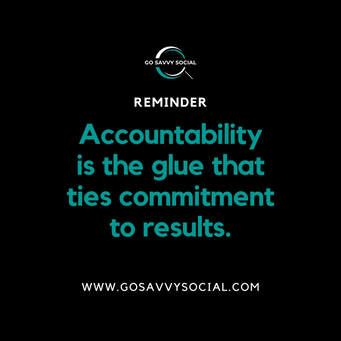|
Maintaining a culture of accountability is crucial for the success and sustainability of an organization. However, fostering accountability should not come at the expense of overlooking the individual capacities and personal boundaries of employees. Striking this delicate balance is key to creating a productive, respectful, and inclusive workplace.
Understanding Accountability Accountability in the workplace goes beyond merely assigning tasks and expecting them to be completed. It's about creating an ecosystem where employees feel a sense of ownership over their responsibilities and are motivated to deliver their best work. This requires clear communication, mutual respect, and a deep understanding of each individual's role within the organization. Recognizing Individual Capacities Each employee brings a unique set of skills, experiences, and personal circumstances to the table. Recognizing and appreciating this diversity is the first step toward establishing a culture of accountability that respects individual capacities. Leaders must ensure that workloads are distributed fairly and that expectations align with each employee's abilities and resources. Overloading employees without consideration for their capacity can lead to burnout, decreased productivity, and a decline in morale. Respecting Personal Boundaries In the pursuit of accountability, it's essential to respect the personal boundaries established by employees. This includes acknowledging their work-life balance, personal commitments, and the need for mental and physical well-being. Encouraging employees to communicate their boundaries and limitations can foster a supportive environment where individuals feel valued and understood. Strategies for Balancing Accountability with Capacity and Boundaries 1. Open Communication Create channels for open and honest communication, allowing employees to express concerns, provide feedback, and discuss their capacities and boundaries without fear of reprisal. 2. Flexible Work Arrangements Consider implementing flexible work arrangements that accommodate different working styles, personal responsibilities, and peak productivity times. 3. Regular Check-ins Schedule regular one-on-one check-ins to discuss progress, address challenges, and reassess workloads and deadlines as necessary. 4. Professional Development Invest in professional development opportunities that allow employees to enhance their skills, increasing their capacity and confidence in managing responsibilities. 5. Recognition and Support Acknowledge and reward achievements and efforts, showing appreciation for hard work and dedication. Offer support and resources to help employees overcome obstacles and succeed in their roles. Accountability is a two-way street that requires a nuanced approach, balancing organizational goals with the individual needs of employees. By recognizing capacities, respecting boundaries, and fostering open communication, leaders can cultivate a culture of accountability that promotes high performance, employee satisfaction, and sustainable success. In doing so, organizations not only achieve their objectives but also support the well-being and growth of their most valuable asset— their people.
0 Comments
Leave a Reply. |
AuthorAshly Hughes Archives
June 2024
Categories |
|
© COPYRIGHT 2009. ALL RIGHTS RESERVED.
|


 RSS Feed
RSS Feed
